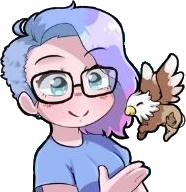A pop quiz for speculative fiction writers. Think about your current work-in-progress. Maybe it’s a short story, a novel, or a play. Now, thinking about your protagonist or main character, answer the following questions:
- What are your character’s greatest fears from one day to the next?
- What does he or she want in life, most of all?
- What does your character want for those around her, the important people in her life?
If you can answer these questions without hesitation, you’re ahead of the class. You’ve done your homework. Kudos for that!
But if you’re like many writers, and you’re struggling to find the full depth and complexity of your characters, it might be time for a little journaling.
You’ve probably heard of this concept before. It’s simple enough. All you do is write some diary entries in the POV and voice of your main character. You slide into your character’s skin, into their world, and let the thoughts and ideas flow.
This technique has several names. Character journaling. Fictional diary. Et cetera. Call it what you will, just know that it’s a powerful method for breathing life into your characters. It can also be a lot of fun, yielding surprises and insights you never saw coming.
A New Twist on an Old Classic
The general concept is straightforward. You journal in your character’s POV, getting inside their head to reveal their innermost fears, hopes and desires. That’s the gist of it.
But let’s go beyond the basics. After all, stories have a beginning, middle and end. And your character’s headspace can, and probably should, be different at each of those points. So what I’m suggesting is that you write three diary entries for your main character (and maybe for your important secondary characters as well).
Write a diary / journal entry for each of the following:
- The beginning of the story, before the conflict has come to a head.
- The climax of the story, when the conflict and drama have reached a peak.
- The end of the story, post climax, when everything has changed.
For a short story, you might only need to write one or two diary entries. Short stories often “start in the middle,” from a dramatic standpoint. But for a novel, you’ll definitely benefit from doing all three. It forces you to think about how the events in the story affect your character, and how your character shapes those events through his or her actions.
This isn’t a writing class and there aren’t any hard-and-fast rules. You could approach this project however you want. But, having done it many times myself, I would offer the following tips:
- Don’t show the diary to anyone. Keep it private, just like a regular diary. Give your character the confidence to “open up” without fear of judgment.
- Turn off your internal editor and let the words flow, grammar be damned. It’s a diary after all.
- Embrace the turbulent stream of consciousness. Let your character’s thoughts, fears and hopes stream forth, unrestrained. Bust the dam wide open.
What it comes down to is this: If you give your characters the space and opportunity to surprise you, they probably will. And your story will be richer for it.
Notes from the Field: A Real-World Example
I’ve used this exercise many times, but it never ceases to surprise me. Just when I think I’ve got my characters figured out, I write a few journal entries and BAM… revelations.
Here’s one example. My current WIP is a sci-fi horror novel set in the future, in which a woman travels to a huge shopping mall to retrieve her errant teenage daughter (who is supposed to be at the library studying). Long story short, the mall’s service androids go bananas and turn murderous, and what began as an ordinary trip to the mall turns into a survival scenario.
I did some journaling on behalf of the mother, the main character in the story, and discovered she harbors a lot of guilt. She got into some trouble in the past, got kicked off the police force, and ended up with her face all over the news. I knew those things, because I wrote them. What I didn’t know””even halfway through the novel””was how much guilt she carried for putting her daughter through all of that turmoil. She had failed her daughter, at least in her mind. That particular insight emerged as the mother was “speaking” through me in the relative safety of her private journal.
(Thankfully, she gave me permission to carry some of this over into the novel.)
Think of it as an exercise in trust. Your character uses you as a kind of medium. They share, and you write. That’s the arrangement. And while much of the journaling won’t ever see the light of day, it will breathe new life into your characters. It will make them more real in your mind, and in the reader’s mind.
And who knows, you might even produce some usable material you can add into the story. With your character’s permission, of course.
 BIO: Brandon Cornett is a longtime writer whose stories have appeared in the Mississippi Review and other journals. His first novel, Purgatory, is a horror-based thriller with a reality TV tie-in, available now on Amazon. His next novel will be out in 2020. Brandon also blogs about speculative fiction with a nerdy level of enthusiasm over at https://www.cornettfiction.com/blog/.
BIO: Brandon Cornett is a longtime writer whose stories have appeared in the Mississippi Review and other journals. His first novel, Purgatory, is a horror-based thriller with a reality TV tie-in, available now on Amazon. His next novel will be out in 2020. Brandon also blogs about speculative fiction with a nerdy level of enthusiasm over at https://www.cornettfiction.com/blog/.
If you’re an author or other fantasy and science fiction creative, and want to do a guest blog post, please check out the guest blog post guidelines. Or if you’re looking for community from other F&SF writers, sign up for the Rambo Academy for Wayward Writers Critclub!









 Note from Cat: I copy-edited Alanna’s recent novel,
Note from Cat: I copy-edited Alanna’s recent novel,  Once I started focusing in on dialogue, this became a personal challenge for me, beyond what fanfiction already was. Could I write a fic with only dialogue and make it clear who was speaking when? How about a scene with more than two people? If I read this dialogue out loud, could I imagine the character’s voice actor saying it, or would it sound strange in their mouths? What sorts of words and verbal tics did these characters use that I could employ to indicate when they were speaking? The harder I worked at getting these voices down, the more positive responses I got from my new friends in the fandom and the harder I tried. (And in a fortuitous story of the modern age, I became friends with another fanfic writer for Zombies! Run who, six years later, is now my fiancee.)
Once I started focusing in on dialogue, this became a personal challenge for me, beyond what fanfiction already was. Could I write a fic with only dialogue and make it clear who was speaking when? How about a scene with more than two people? If I read this dialogue out loud, could I imagine the character’s voice actor saying it, or would it sound strange in their mouths? What sorts of words and verbal tics did these characters use that I could employ to indicate when they were speaking? The harder I worked at getting these voices down, the more positive responses I got from my new friends in the fandom and the harder I tried. (And in a fortuitous story of the modern age, I became friends with another fanfic writer for Zombies! Run who, six years later, is now my fiancee.) About the author: Alanna McFall is a novelist, short-story writer, and playwright. Originally from Minnesota, she lived in a number of places on either coast before landing in the Bay Area, where she is a resident playwright with PlayGround San Francisco. Alanna is the 2019 winner of the June Anne Baker Prize for female playwrights representing a gifted new comedic or political voice. When not writing, she is a theater administrator, avid cross-stitcher, and podcast nerd. Follow her work and upcoming projects atÂ
About the author: Alanna McFall is a novelist, short-story writer, and playwright. Originally from Minnesota, she lived in a number of places on either coast before landing in the Bay Area, where she is a resident playwright with PlayGround San Francisco. Alanna is the 2019 winner of the June Anne Baker Prize for female playwrights representing a gifted new comedic or political voice. When not writing, she is a theater administrator, avid cross-stitcher, and podcast nerd. Follow her work and upcoming projects atÂ